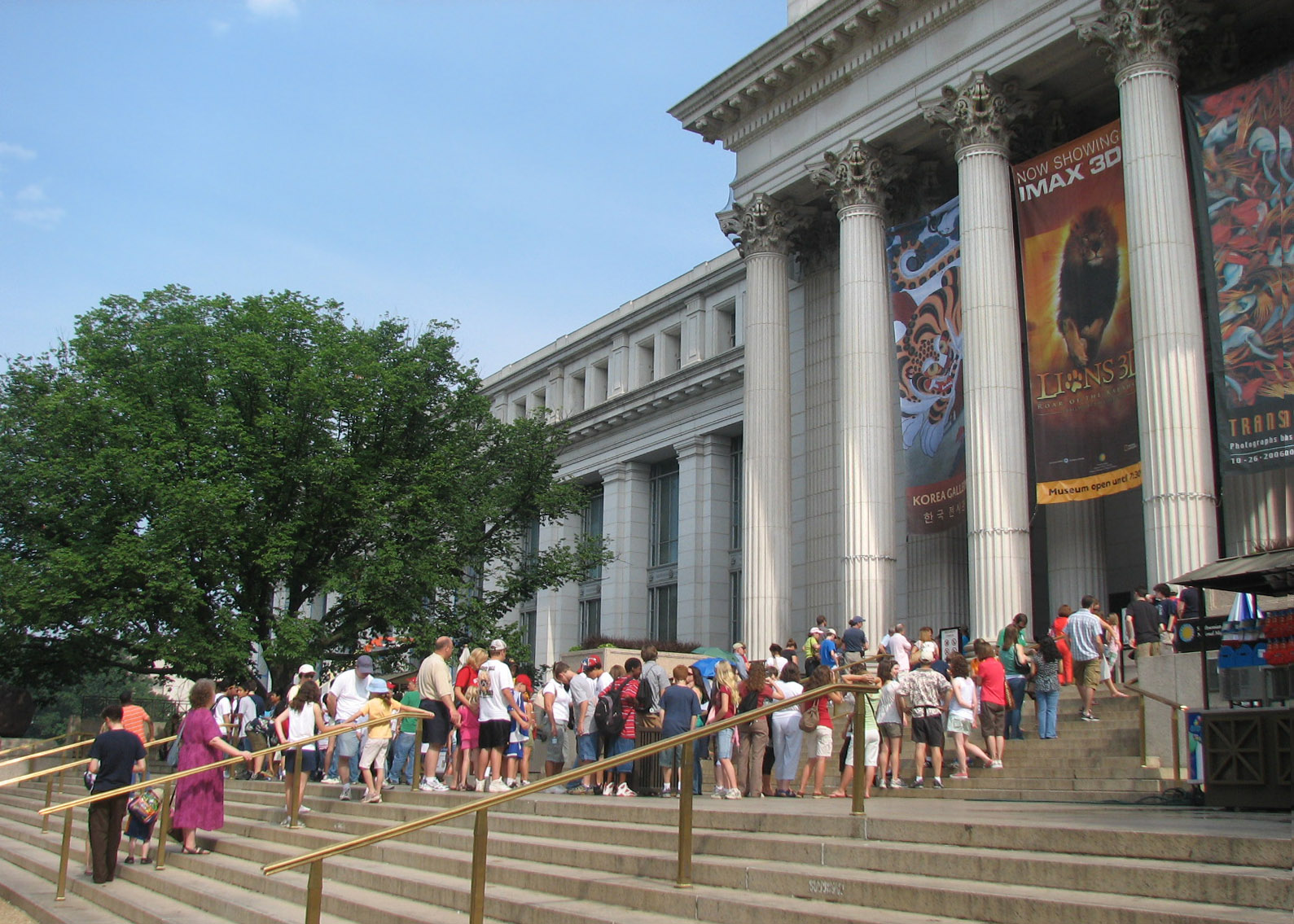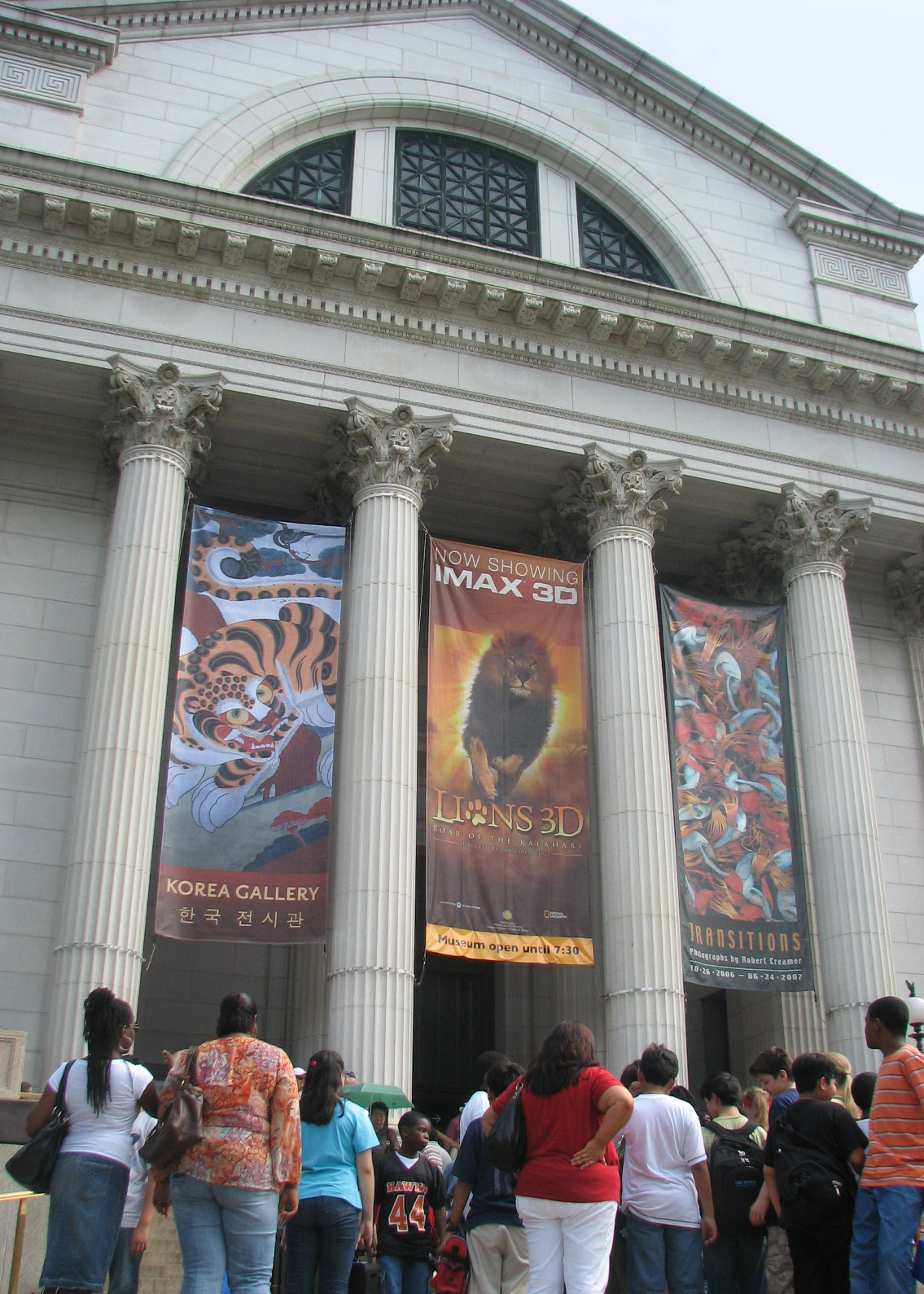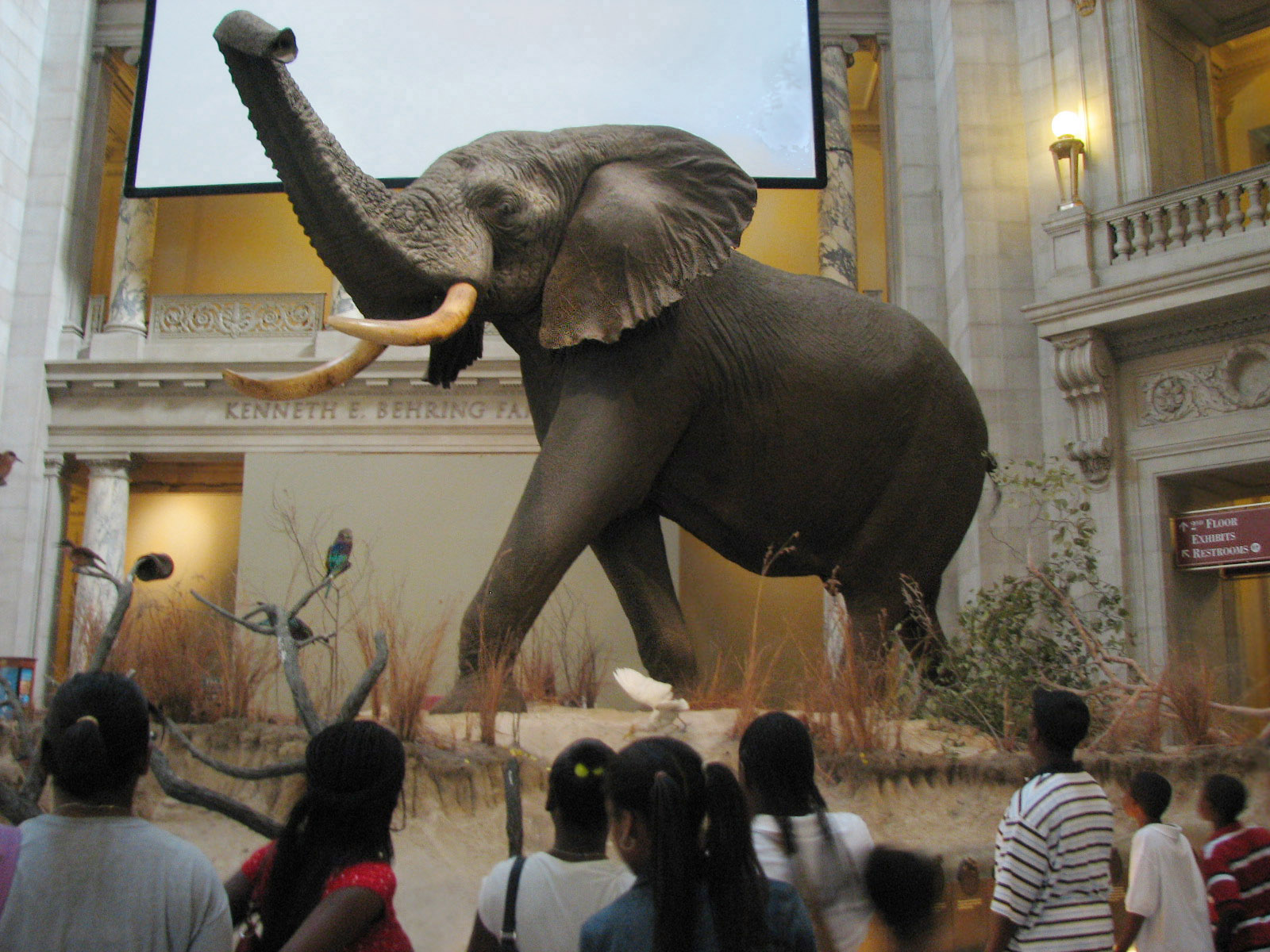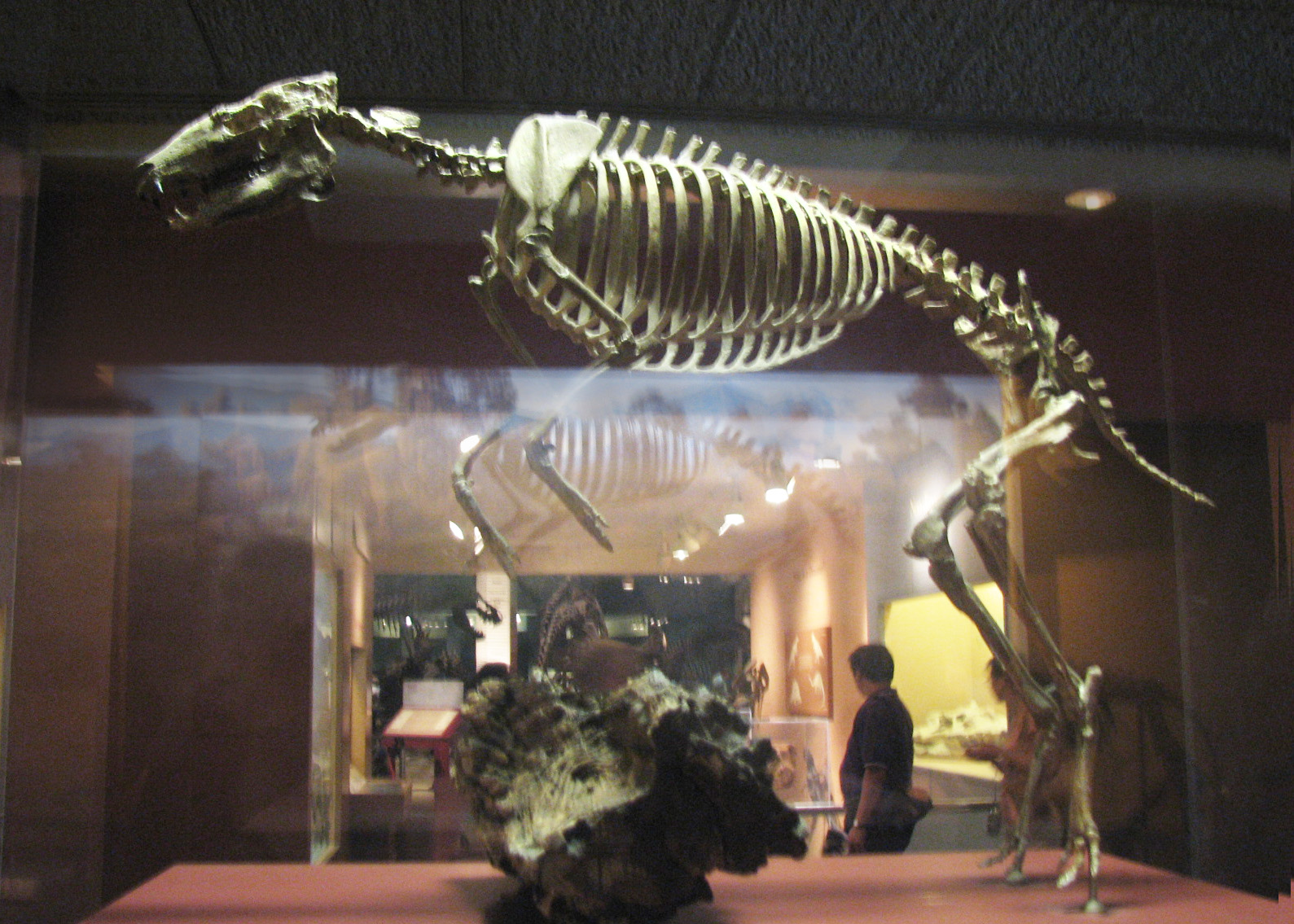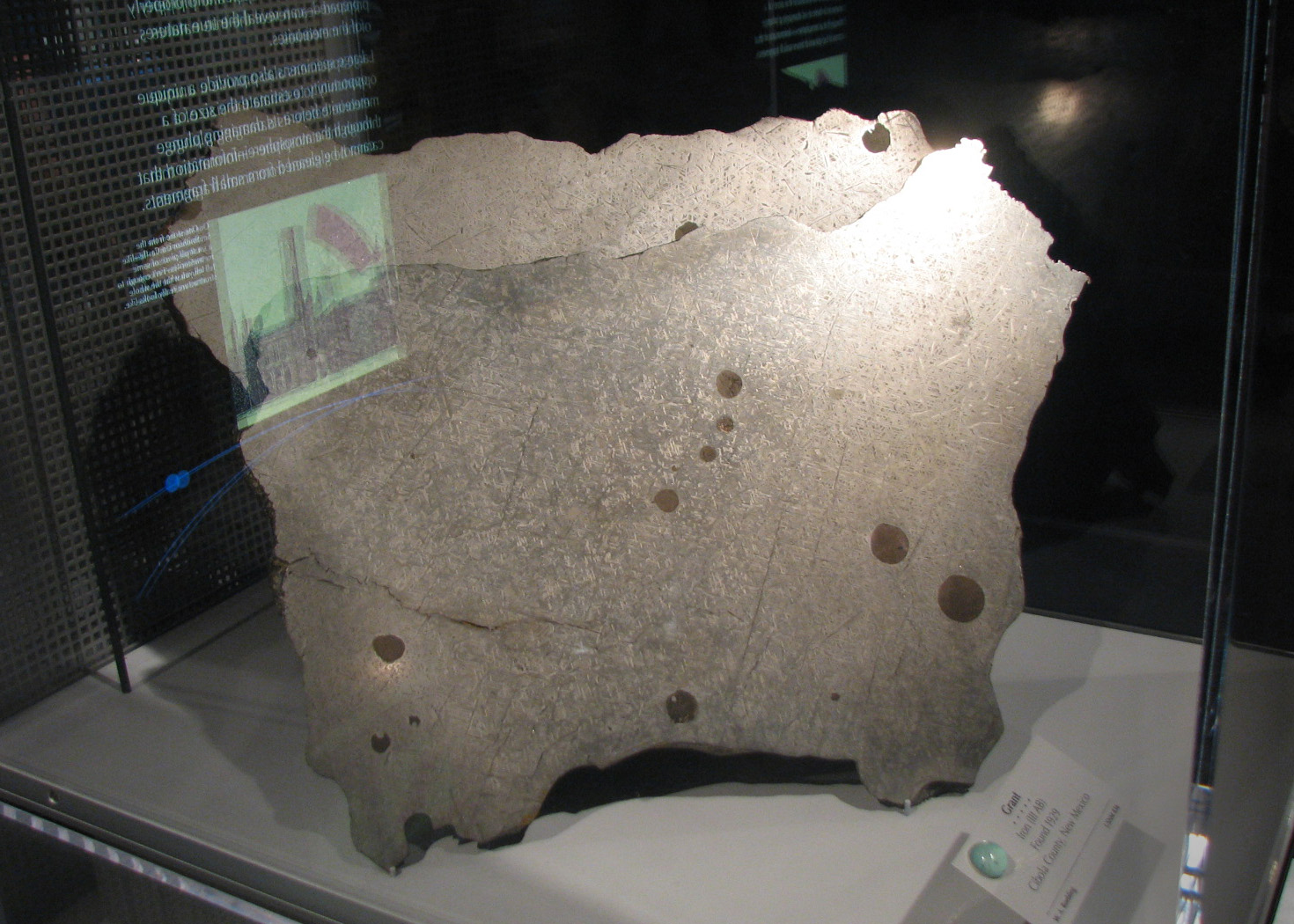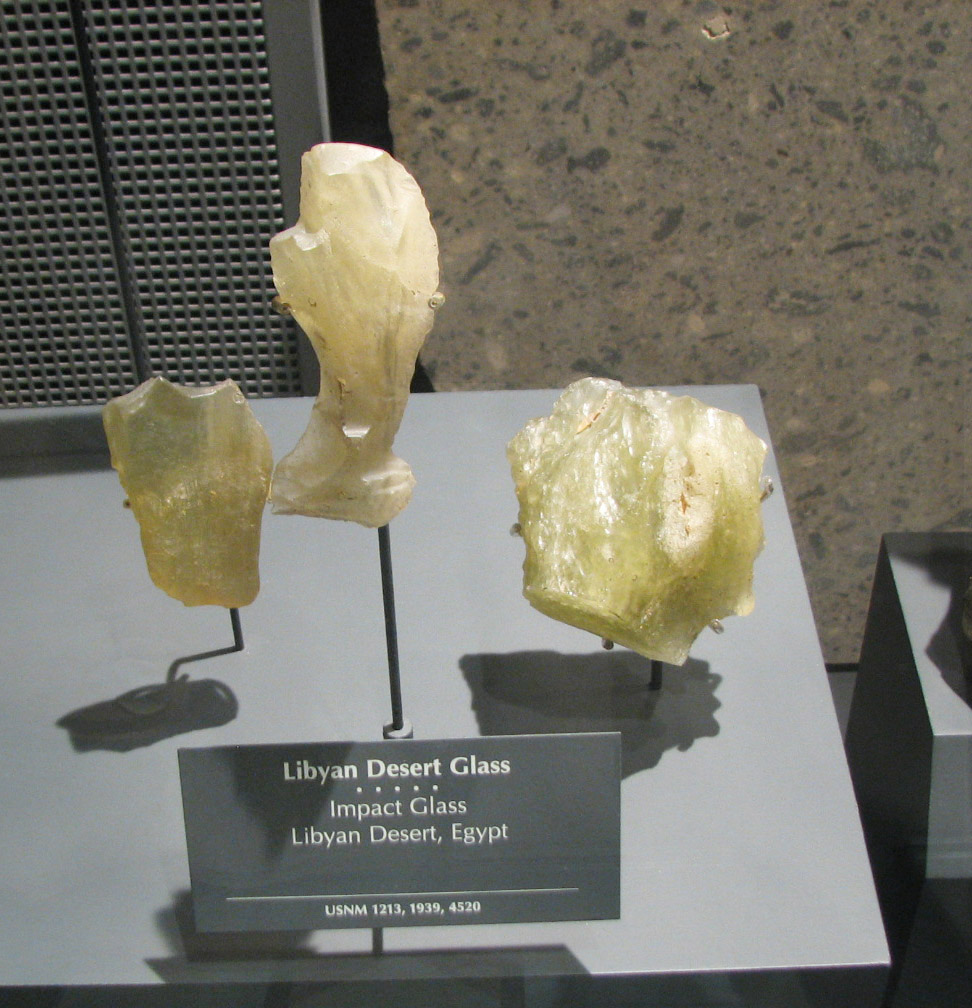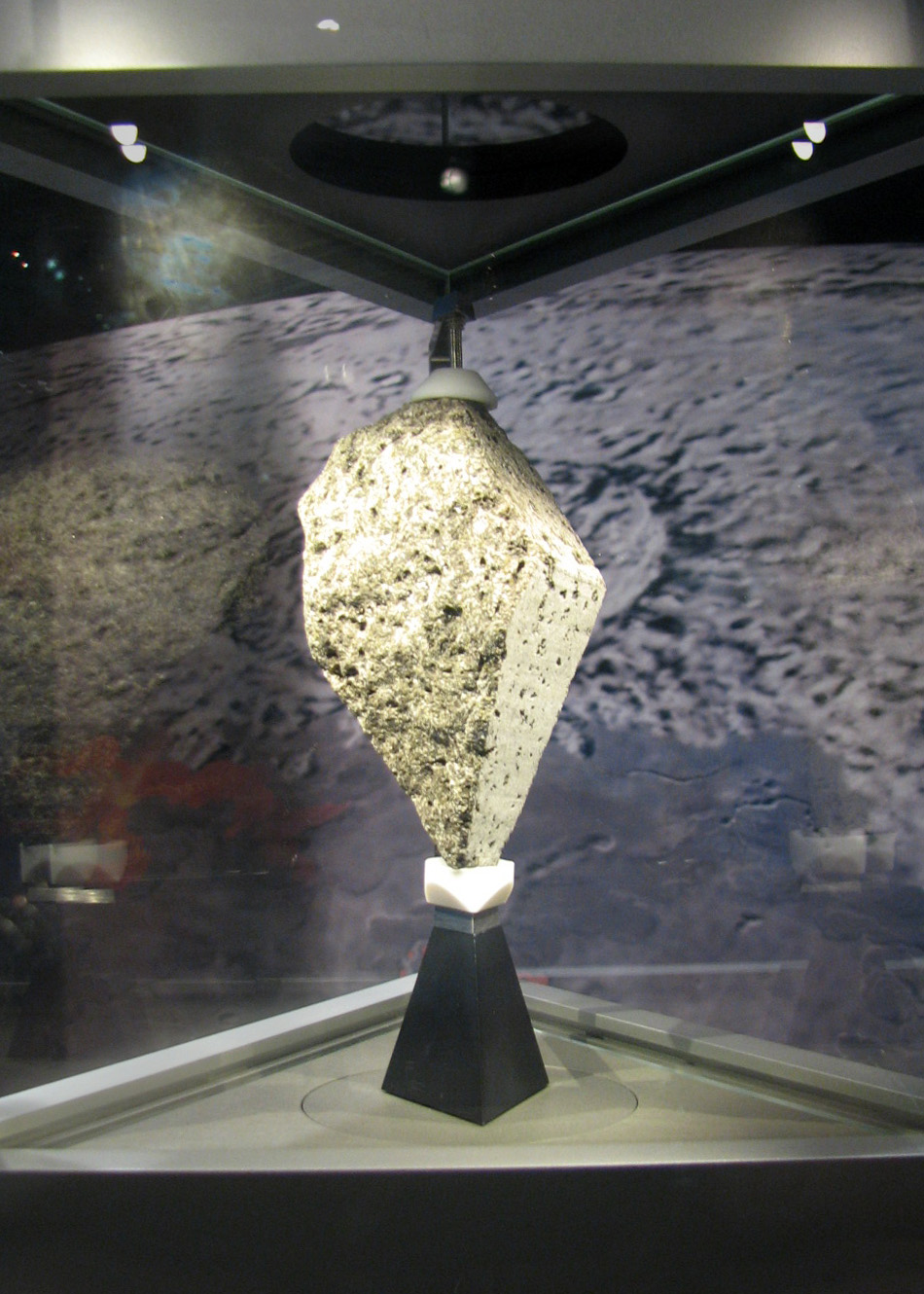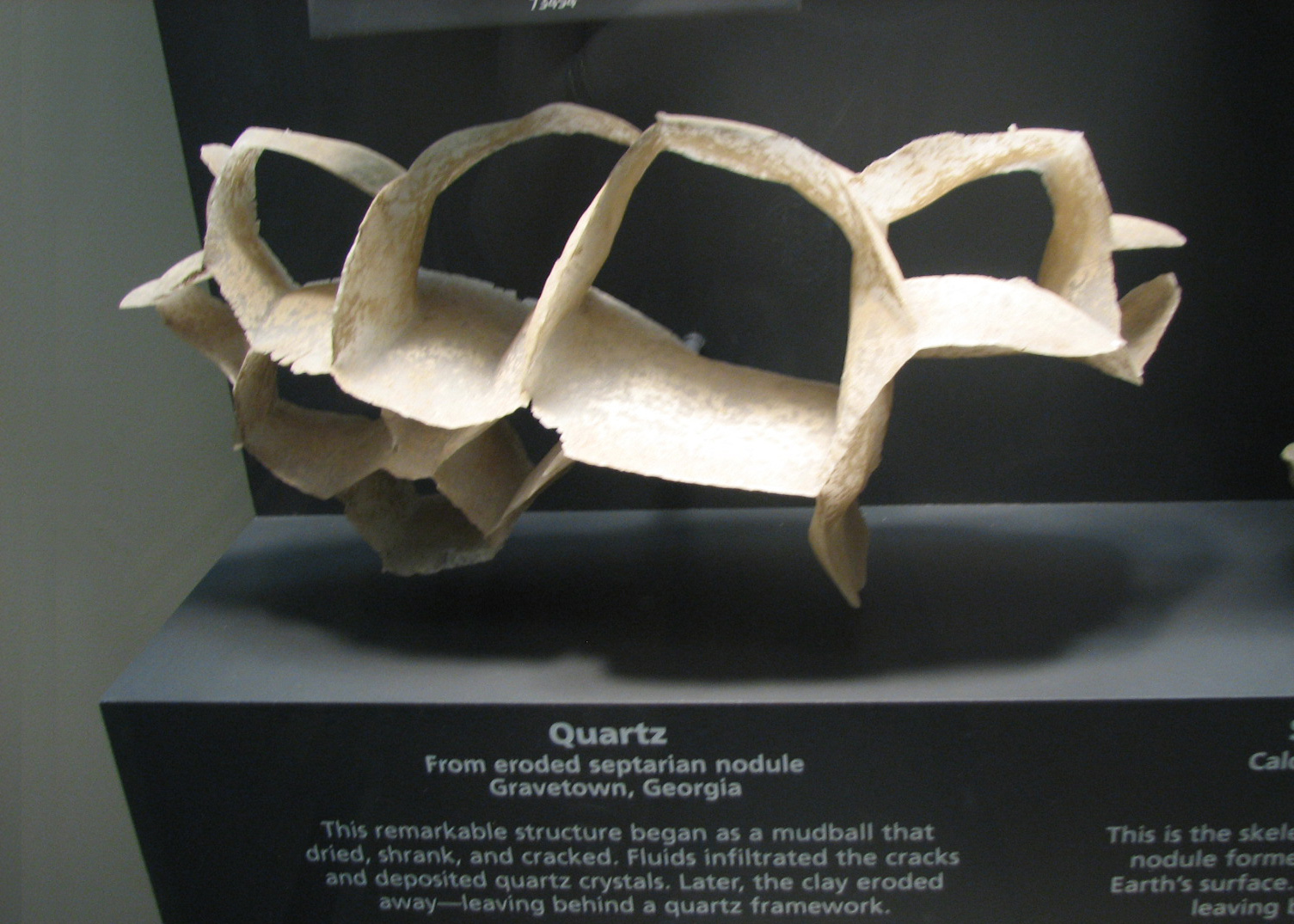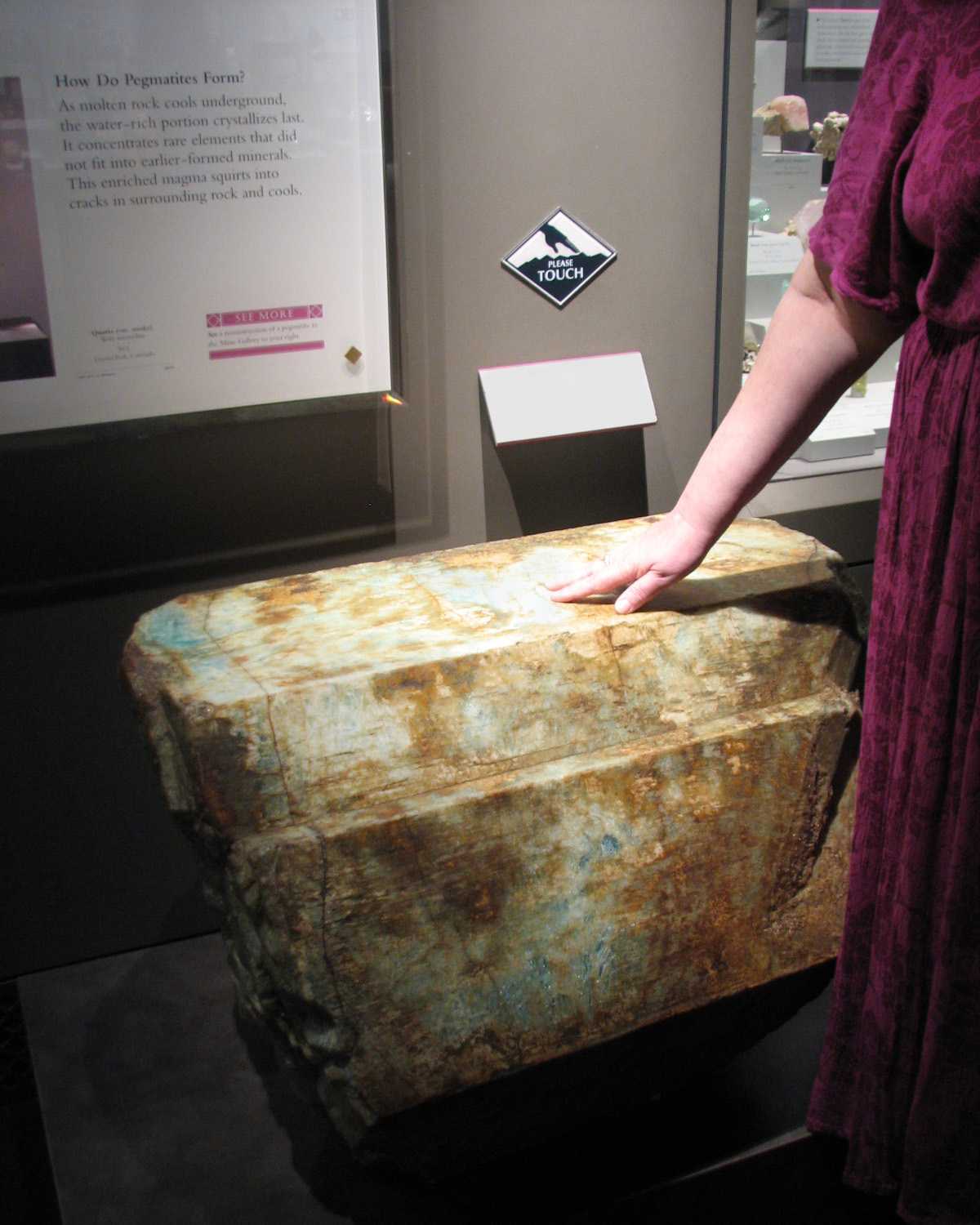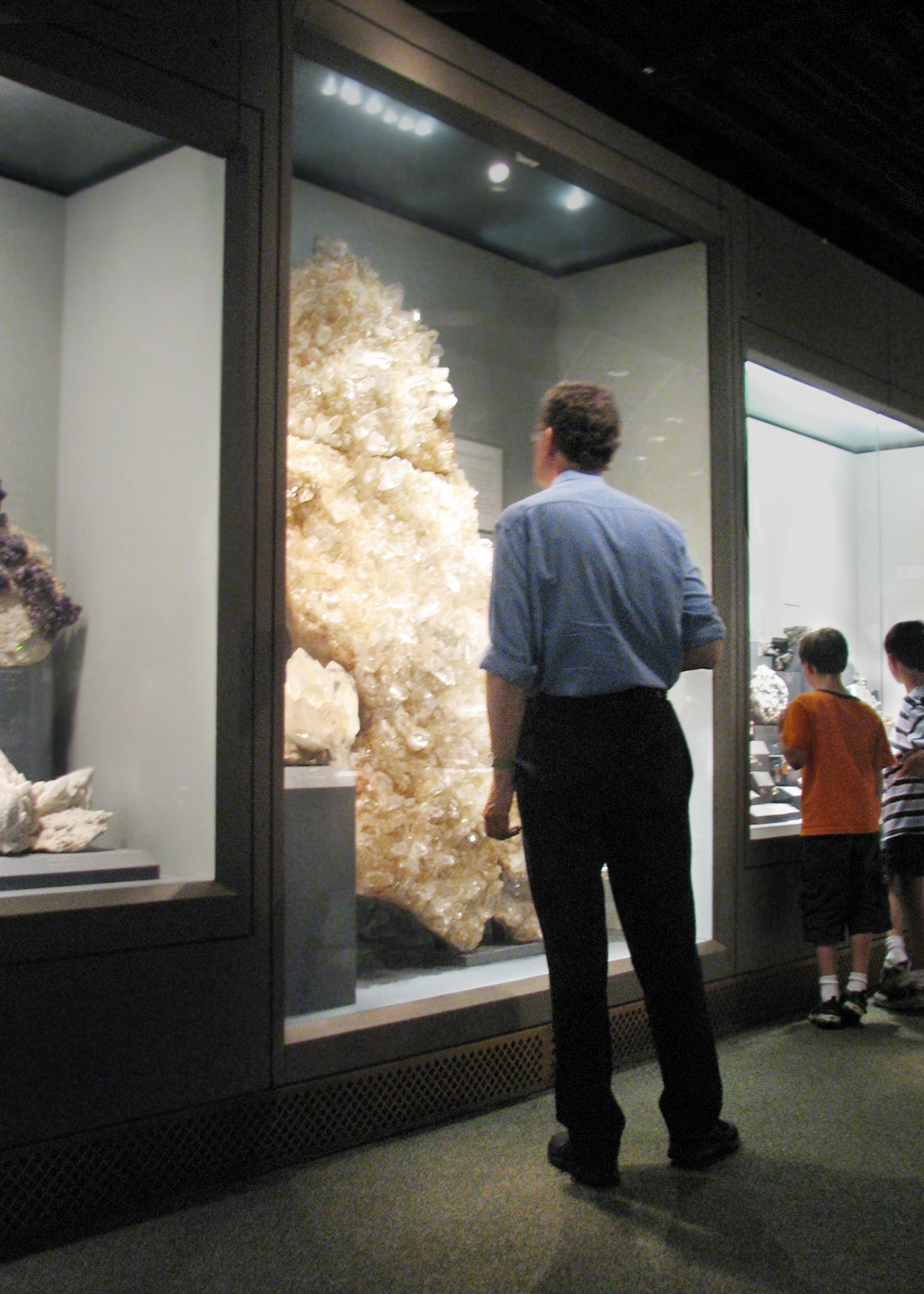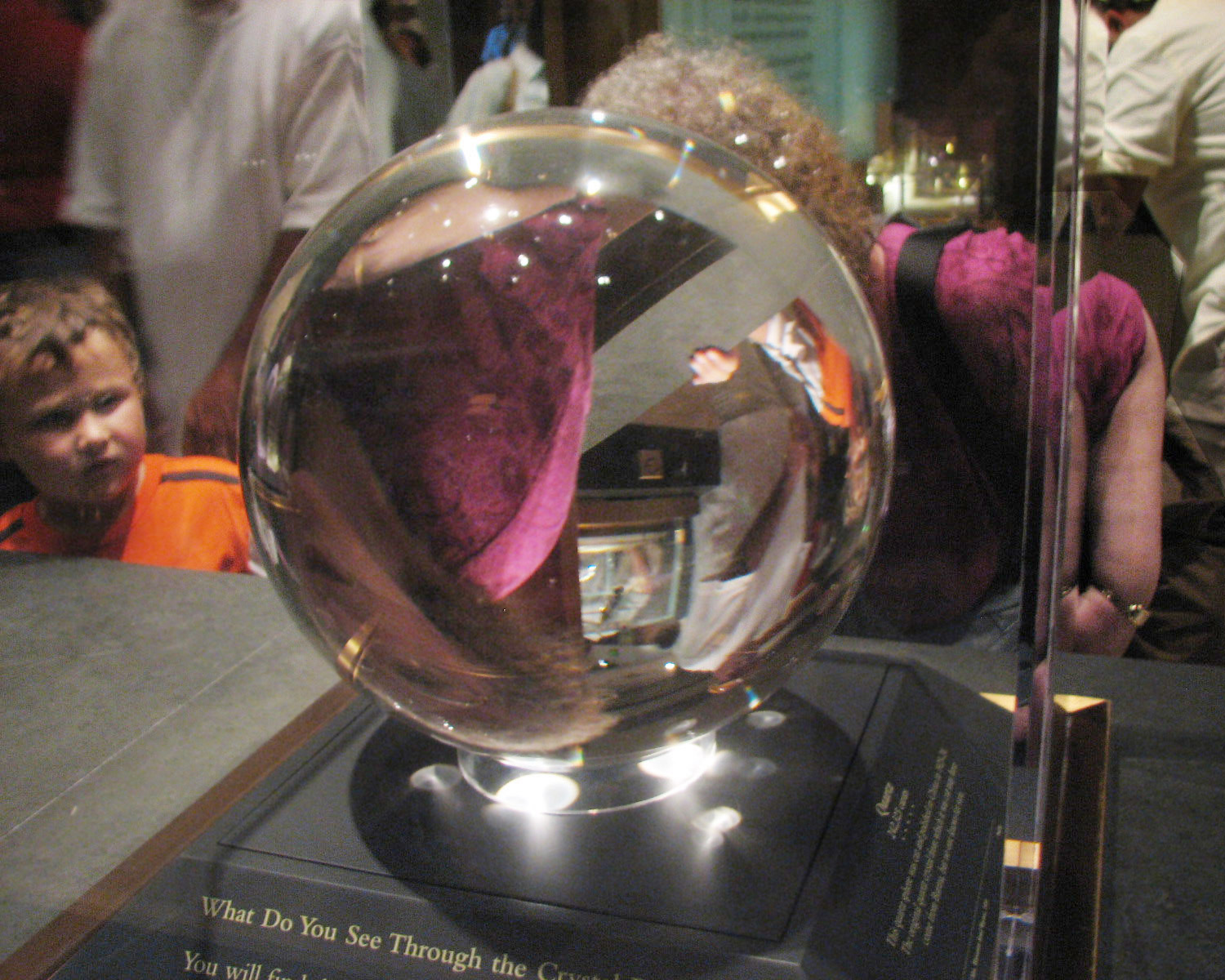|
In the more popular areas, it was as crowded as it was at the 'Tut show' we went to at LACMA in July 2005. We had to wait our turn in line to see the magnificent diamond and ruby jewels. Each person took out cameras of varying sizes and snapped as they passed by the various stations.
I didn't have such good photographic luck, as many of these photos turned out blurry. But I did capture a few nice shots:
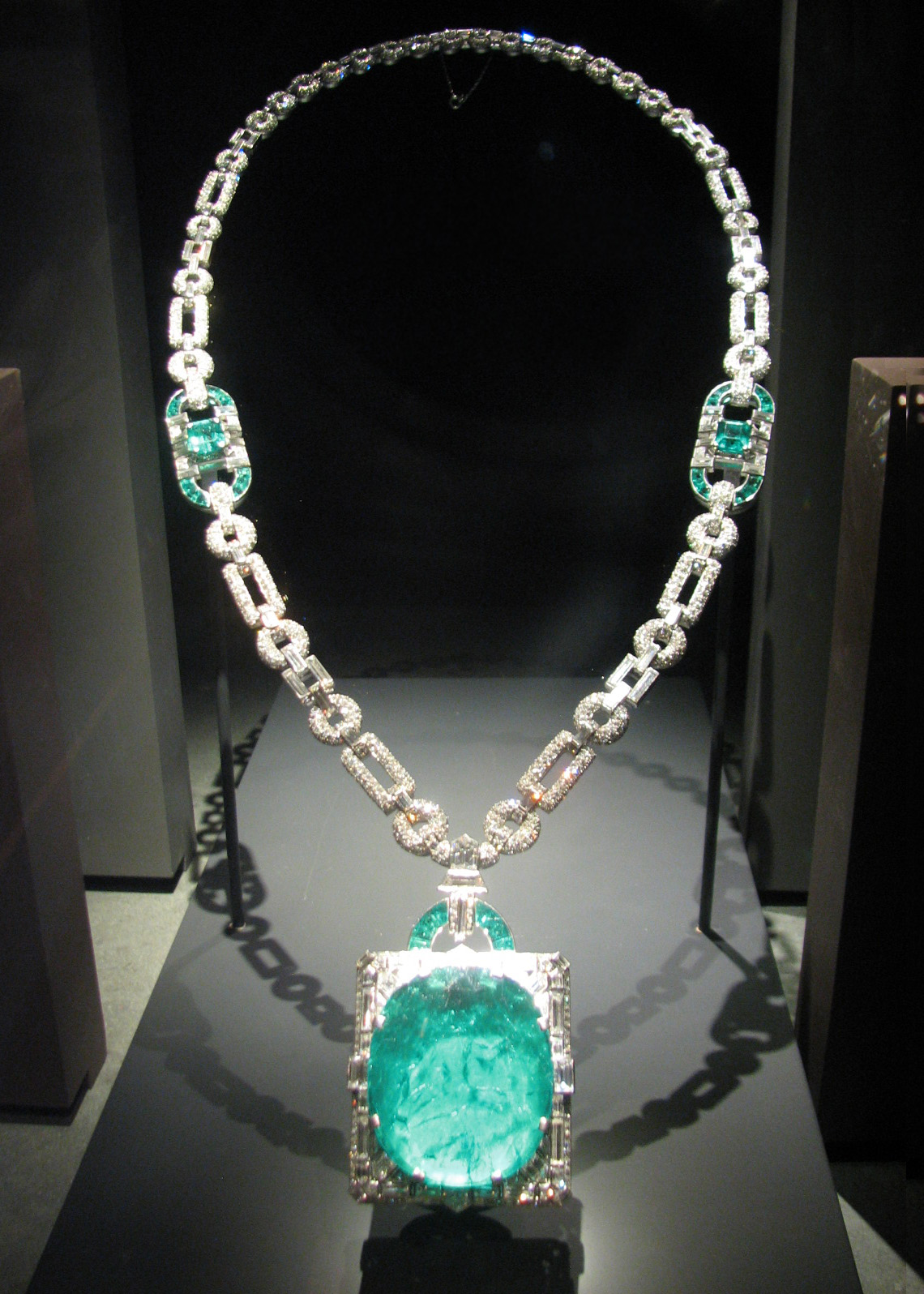
Mackay Emerald and Diamond Necklace, 168 carats, Muzo, Colombia
|
"Thus huge emerald is set in an art deco diamond and platinum pendant designed by Cartier. In 1931, Clarence Mackay gave the necklace as a wedding gift to his wife, Anna Case - a prima donna at the New York Metropolitan Opera from 1909 to 1920."
|
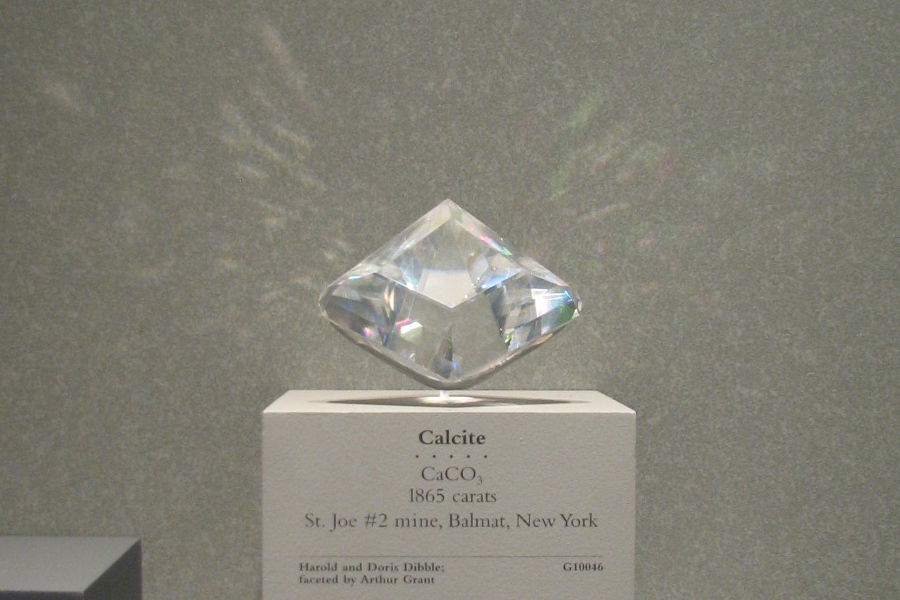
Calcite, 1865 carats, St. Joe#2 mine, Balmat, New York
faceted by Arthur Grant
It's quite the sparkler, isn't it? Calcite, however, isn't one of those fancy gem stones, mostly because it is rather soft, only 3 on the Moh's scale, whereas emeralds are eight. Sapphires and rubies are even harder, being 9 on the scale. The hardest mineral is of course, diamond, which is a 10 on the scale.
Julia and I did our best to see everything the natural history museum offered. The only thing we missed was the second 3D Imax movie about lions. The one about sharks was amazing. I felt like the little jellyfish and other small fish were swimming right by me. I could almost reach out and grab them. I really had a good look at all those types of sharks. Sadly though, all of them are endangered, their populations having been reduced by as much as 80%.
I also enjoyed the mammal displays. A movie presentation, "Morgies family re-union" was most educational. Ordinarily, I hate "dead animal" displays, but whoever had done them gave a sort of life to them in that they were posed in their most characteristic poses. In contrast, only so much could be done for the 'dead bird' displays, though better lighting would have helped. (I suspect they were much older displays.). And skellies, this museum has far more of them than I remember the New York museum having. However, in truth I cannot properly judge, as I did not see all the ANHM museum's holdings.
But that is why I planned nine days for our explorations here, so that each day could be devoted to ONE museum. Today it will be the American Art and Portrait galleries. If only my feet and chafed thighs will hold out! Julia, with her longer legs, does not seem to be having the trouble I do! (I think it is that 'devil' called arthritis that is the culprit.) It is good we are making these explorations before we get any older!
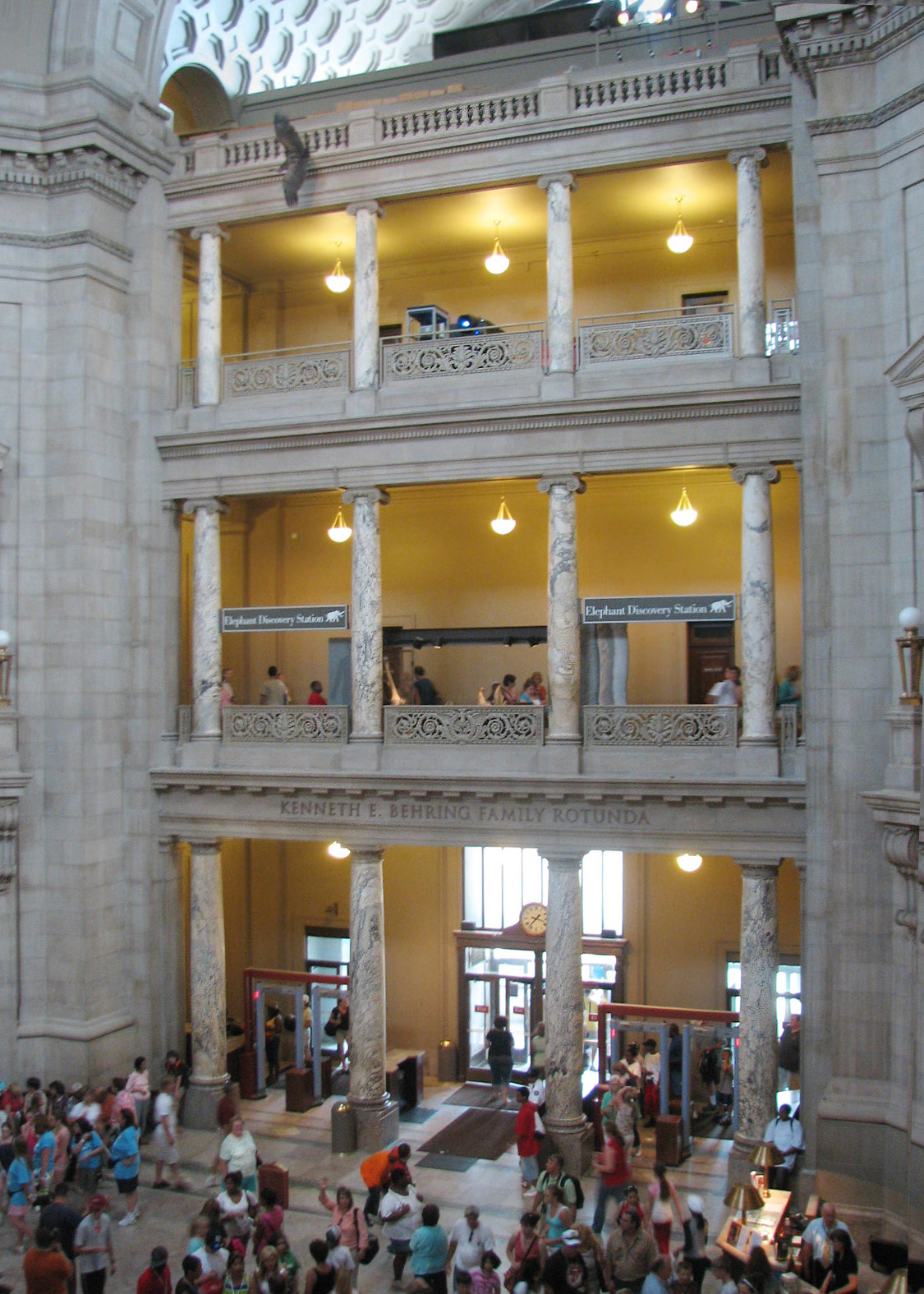
|

